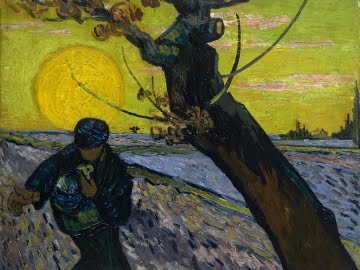“Look”
“Look, look!”
“Oh look.”
I vividly remember sitting in a circle with my first grade classmates and opening up the first Dick and Jane book. I was so excited about learning to read that I nearly peed myself. Frustration quickly set in, though, as I sat there while some of my peers took forever to sound out one word. (Interior monologue: “Really people, it’s a simple word of one syllable, you’ve heard it a million times. Can we move on now?”)
Now, many years later, these elementary words come back to me every day. You see, I work in a museum and I volunteer in another one. And I’ve noticed that visitors can be divided into two groups, those who photograph everything and those who actually look at what’s in front of them.
Isn’t that the same thing, you ask? Not. At. All. The photographers are constantly angling for the best shot that they can post on some social media site to show where they’ve been, almost as if it validates their existence. The focus is on the narrow vision through the lens, something that can be viewed later, with no surrounding sensation.
The lookers actually experience what is in front of them, right there, right then. The beauty of a garden includes the smells and the sounds as well as the visual perfection of a single blossom. Looking at a painting involves staring at not only the painting itself, (rendered flat in a photograph but textured and layered in person), but the frame, the art that is hung near it and the room that it is in. A kinetic sculpture mesmerizes by it’s intricate simplicity; the movement can be captured on video but the feeling of wonder and appreciation when you activate it and see it start to move for the first time is lost.
I’m not saying I never take photographs in museums. I do, assuming I have permission, especially when it’s a lesser-known work that the gift shop won’t have a postcard of. And I post photographs on this blog. But I also take the time to observe.
Case in point. A few years ago I went to the MFA in Boston to see The Sower, a small painting that was on loan from the Van Gogh Museum. After checking with the guard I took a quick photo and then stood in front of the painting, drinking in the bold, swirling colors and the simple joy of the picture. Suddenly a substantial couple with a large camera planted themselves directly in front of me and started clicking away. I said, “Excuse me” and waited. No response; evidently I was invisible. To test this theory I walked around and stood in front of their camera and resumed my perusal of the painting. After much harrumphing and tsking they moved on. (Later, as I left the gallery, the guard gave me a thumbs-up.)
Of course, it’s not just in museums that this photo-mania is occurring. It’s everywhere. I went to the ballet recently and was appalled to find that the theater now lets audience members bring food into the auditorium (I spent a lot of money to watch the dancers, not to listen to people masticating and water bottles rolling down the aisles. But that is a rant for another day).
Just before the lights went down an omniscient voice came over the sound system to remind audience members that cell phones should be turned off and no photography or videoing of the performance was allowed. (Note: This is not just a courtesy to other patrons, it’s legal clause in the contracts of the dancers and the musicians in the orchestra.) About halfway through the first act I noticed a glare hitting the corner of my right eye. I turned around and sure enough, two twenty-somethings were holding their smartphones up just behind the gap between my head and that of my friend. They stopped and did not start again under threat of being removed by the usher. (Yes, I’m that person. Again, I paid to actually watch the ballet, not to be blinded by someone’s phone while they made an illegal video).
Theater is an experience you share with the performers and the rest of the audience and is only truly alive in the moment. That night, the music was sumptuous – Swan Lake, one of the most beautiful scores ever composed – the dancing was excellent, and this particular electrifying performance was only going to happen once. I suppose if you don’t appreciate that it’s your loss but ruining it for others is just rude.
There is no peripheral vision when you are looking through a lens. You not only miss what else is going on; you lose focus on the people around you as well. So before lifting the lens to the eye, maybe we should all stop and consider the sage words of Dick (or more probably, Jane):
“Look.”
“Look, look!”
“Oh look.”
(Note: After checking the text of Fun With Dick and Jane, I realized that there are a couple of other lines in the first part, consisting mostly of the word “oh.” These have been omitted to fit with what the author remembers.)
